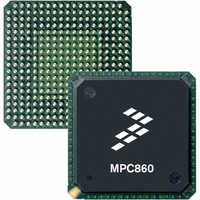MC68360VR25VL Freescale Semiconductor, MC68360VR25VL Datasheet - Page 463

MC68360VR25VL
Manufacturer Part Number
MC68360VR25VL
Description
IC MPU QUICC 25MHZ 357-PBGA
Manufacturer
Freescale Semiconductor
Datasheets
1.MC68EN360VR25L.pdf
(14 pages)
2.MC68EN360VR25L.pdf
(2 pages)
3.MC68360AI25L.pdf
(962 pages)
Specifications of MC68360VR25VL
Processor Type
M683xx 32-Bit
Speed
25MHz
Voltage
3.3V
Mounting Type
Surface Mount
Package / Case
357-PBGA
Family Name
M68000
Device Core
ColdFire
Device Core Size
32b
Frequency (max)
25MHz
Instruction Set Architecture
RISC
Operating Supply Voltage (max)
3.3V
Operating Supply Voltage (min)
2.7V
Operating Temp Range
0C to 70C
Operating Temperature Classification
Commercial
Mounting
Surface Mount
Pin Count
357
Package Type
BGA
Lead Free Status / RoHS Status
Lead free / RoHS Compliant
Features
-
Lead Free Status / Rohs Status
Compliant
Available stocks
Company
Part Number
Manufacturer
Quantity
Price
Company:
Part Number:
MC68360VR25VL
Manufacturer:
Exar
Quantity:
160
Company:
Part Number:
MC68360VR25VL
Manufacturer:
Freescale Semiconductor
Quantity:
10 000
Company:
Part Number:
MC68360VR25VLR2
Manufacturer:
Freescale Semiconductor
Quantity:
10 000
- Current page: 463 of 962
- Download datasheet (4Mb)
7.10.13 Clock Glitch Detection
A clock glitch occurs when an input clock signal transitions between a one and zero state
twice, within a small enough time period to violate the minimum high/low time specification
of the input clock. Spikes are one type of glitch. Additionally, glitches can occur when exces-
sive noise is present on a slowly rising/falling signal.
Glitched clocks are a worry to many communications systems. Not only can they cause sys-
tems to experience errors, they can potentially cause errors to occur without even being
detected by the system. Systems that supply an external clock to a serial channel are often
susceptible to glitches from situations such as noise, connecting/disconnecting the physical
cable from the application board, or excessive ringing on the clock lines.
The SCCs on the QUICC have a special circuit designed to detect glitches that may occur
in the system. The glitch circuit is designed to detect glitches that could cause the SCC to
transition to the wrong state. This status information can be used to alert the system of a
problem at the physical layer.
The glitch detect circuit is not a specification test. Thus, if the user develops a circuit that
does not meet the input clocking specifications for the SCCs, erroneous data may be
received/transmitted that is not indicated by the glitch detection logic. Conversely, if a glitch
indication is signaled, it does not guarantee that erroneous data was received/transmitted.
Regardless of whether the DPLL is used, the received clock is passed through a noise filter
that eliminates any noise spikes that affect a single sample. This sampling is enabled with
the GDE bit of the GSMR.
If a spike is detected, a maskable receive or transmit glitched clock interrupt is generated in
the event register of the SCC channel. Although the user may choose to reset the SCC
receiver or transmitter or to continue operation, he should keep statistics on clock glitches
for later evaluation. In addition, the glitched status indication may be used as a debugging
aid during the early phases of prototype testing.
7.10.14 Disabling the SCCs on the Fly
If an SCC is not needed for a period of time, it may be disabled and reenabled later. In this
case, a sequence of operations is followed.
These sequences ensure that any buffers in use will be properly closed and that new data
will be transferred to/from a new buffer. Such a sequence is required if the parameters that
must be changed are not allowed to be changed dynamically. If the register or bit description
The 1:2 ratio of the SyncCLK to the serial clock does not apply
when the DPLL is used to recover the clock in the 8 , 16 , or 32
modes. The synchronization actually occurs internally after the
receive clock is generated by the DPLL; therefore, even the fast-
est DPLL clock generation (the 8 option) easily meets the re-
quired 1:2 ratio clocking limit.
Freescale Semiconductor, Inc.
For More Information On This Product,
MC68360 USER’S MANUAL
Go to: www.freescale.com
NOTE
Serial Communication Controllers (SCCs)
Related parts for MC68360VR25VL
Image
Part Number
Description
Manufacturer
Datasheet
Request
R
Part Number:
Description:
Manufacturer:
Freescale Semiconductor, Inc
Datasheet:

Part Number:
Description:
MC68360 MC68360 Multiple Ethernet Channels on the QUICC
Manufacturer:
Motorola / Freescale Semiconductor

Part Number:
Description:
MC68360 Implementing an 8 bit Eprom for an MC68EC040-MC68360 System
Manufacturer:
Motorola / Freescale Semiconductor

Part Number:
Description:
MC68360 Interfacing the MC68060 to the MC68360
Manufacturer:
Motorola / Freescale Semiconductor

Part Number:
Description:
MC68360 MC68360 RAM Microcode Package Option Overview
Manufacturer:
Motorola / Freescale Semiconductor

Part Number:
Description:
MC68360 MC68360 CPM-CPU Interaction
Manufacturer:
Motorola / Freescale Semiconductor

Part Number:
Description:
MC68360 Interfacing SDRAM to the MC68360 QUICC Device
Manufacturer:
Motorola / Freescale Semiconductor

Part Number:
Description:
MC68360 Interfacing the QUICC to a MCM516400 (4Mx4 10-12 column-row) DRAM
Manufacturer:
Motorola / Freescale Semiconductor

Part Number:
Description:
MC68360 Interfacing the 68360 (QUICC) to T1-E1 Systems
Manufacturer:
Motorola / Freescale Semiconductor

Part Number:
Description:
MC68360 Multiple QUICC Design Concept
Manufacturer:
Motorola / Freescale Semiconductor
Part Number:
Description:
Manufacturer:
Freescale Semiconductor, Inc
Datasheet:
Part Number:
Description:
Manufacturer:
Freescale Semiconductor, Inc
Datasheet:
Part Number:
Description:
Manufacturer:
Freescale Semiconductor, Inc
Datasheet:
Part Number:
Description:
Manufacturer:
Freescale Semiconductor, Inc
Datasheet:
Part Number:
Description:
Manufacturer:
Freescale Semiconductor, Inc
Datasheet:











